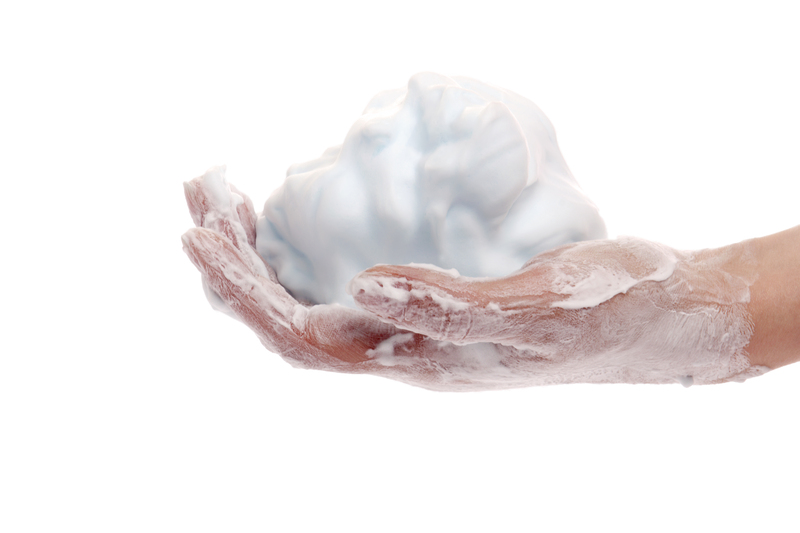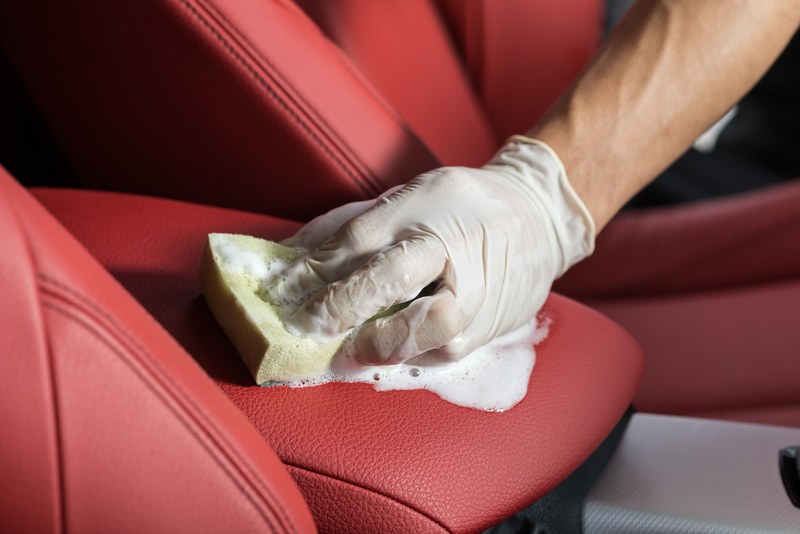Discover How to Remove Damp Smells Easily
Posted on 23/09/2025
Discover How to Remove Damp Smells Easily: The Ultimate Guide
Are you tired of the musty, pervasive scent lingering in your home or office? The presence of a damp smell is not only unpleasant but might also indicate underlying issues like moisture buildup or even mold growth. Learning how to remove damp smells quickly and efficiently is crucial for a comfortable and healthy indoor environment. In this comprehensive, SEO-optimized guide, we'll explore the root causes of damp odors, practical solutions, and expert tips to eliminate musty smells from your living spaces--for good!

Table of Contents
- What Causes Damp Smells?
- Why You Should Remove Damp Smells Immediately
- How to Identify the Source of Damp Odors
- Step-by-Step: How to Remove Damp Smells Easily
- Prevention: Tips to Stop Damp Smells Coming Back
- Frequently Asked Questions on Removing Damp Smells
- Conclusion
What Causes Damp Smells?
Understanding what triggers damp or musty odors is the first step to dealing with them effectively. The most common causes of dampness and the ensuing damp smell are:
- Excess Moisture: High humidity, leaks, condensation, or poor ventilation trap moisture in carpeting, furniture, or walls.
- Mold and Mildew Growth: Fungi thrive in moist environments and release spores that produce that recognizable musty odor.
- Wet or Dirty Fabrics: Damp towels, clothes, upholstery, or even carpets can harbor bacteria and fungi.
- Poor Ventilation: Spaces that lack airflow (such as basements or closed rooms) tend to develop persistent odors.
- Water Damaged Materials: Structural leaks, flooding, or unaddressed spills lead to long-term dampness.
If you notice a humid or musty aroma in your home, it's time to track down the culprit--and fix it for good!
Why You Should Remove Damp Smells Immediately
- Health Risks: Prolonged exposure to damp environments can cause respiratory problems, allergies, and worsen asthma. Mold spores are especially harmful to infants, the elderly, and those with existing health issues.
- Structural Damage: Persistent moisture can rot wood, rust metal, stain walls, and degrade insulation or drywall, potentially compromising your property's structure.
- Loss of Property Value: Homes and offices with lingering musty smells are less appealing and may lose market value.
- Negative Impressions: Guests and visitors associate damp odors with poor hygiene or inadequate maintenance.
The sooner you act to remove damp smells, the better your living environment will be--for your health, wallet, and reputation!
How to Identify the Source of Damp Odors
Pinpointing the source is key to removing unwanted damp smells quickly and permanently. Here are practical steps to help you find the culprit:
- Sniff Test: Move through the affected area, paying special attention to corners, closets, floors, and behind large furniture.
- Visual Inspection: Check for visible signs of moisture, such as water stains, peeling paint, discolored patches on walls/ceilings, or visible mold.
- Feel for Dampness: Touch carpets, upholstery, and walls--dampness is a dead giveaway!
- Look for Leaks: Check plumbing (under sinks, around toilets, near water heaters), windows, or the roof for leaks.
- Examine Clothing and Fabrics: Ensure laundry is thoroughly dry before placing it in drawers or closets. Wet clothes are often to blame for a "wet dog" scent in wardrobes.
If you suspect hidden damp, consider using a moisture meter or consulting with a damp specialist.
Step-by-Step: How to Remove Damp Smells Easily
Now to the heart of the matter: how to remove damp smells efficiently without costly renovations. Here's a proven, step-by-step approach:
1. Ventilate the Area
- Open windows and doors to maximize airflow.
- Use exhaust fans in kitchens, bathrooms, and laundry rooms.
- Set up portable fans to circulate air, especially after a leak or flooding event.
2. Dry Out the Space
- Run a dehumidifier or air conditioner to extract moisture from the air.
- Consider using moisture absorbers like silica gel, cat litter, or baking soda in enclosed spaces (closets, storage boxes).
- Sun-dry rugs, mats, and upholstery when possible.
3. Deep Clean All Surfaces
- Wash hard surfaces (floors, walls, tiles) with warm water and a disinfectant or vinegar solution.
- Launder affected fabrics (curtains, bedding, clothes) with hot water and an odor-neutralizing detergent.
- Steam clean carpets and upholstery to kill bacteria and lift embedded smells.
4. Eliminate Mold and Mildew
- Scrub moldy spots using a mix of water and white vinegar or baking soda (never mix vinegar and bleach!).
- If the mold covers more than 1 sq. meter, or if it's black and persistent, call a professional mold remediation service.
- Replace water-damaged wall sections, ceiling tiles, or flooring if cleaning isn't enough.
5. Neutralize Odors Naturally
- Set out bowls of baking soda, activated charcoal, or coffee grounds--these all absorb damp odors.
- Spray a solution of white vinegar and water in musty corners to break down odor molecules.
- Try simmering lemon peel, cinnamon sticks, or essential oils for a fresh, clean-smelling home.
6. Improve Long-Term Ventilation
- Keep furniture away from walls to allow air circulation behind them.
- Install trickle vents or air bricks in problem areas.
- Use wardrobe dehumidifiers and regularly air out storage spaces.
7. Address and Fix the Underlying Cause
- Seal any leaks in plumbing, roofing, or exterior walls.
- Insulate cold surfaces to prevent condensation (such as external walls or windows).
- Repair any structural issues causing damp, such as faulty guttering or rising damp in basements.
By dealing with both the symptoms and causes, you'll effectively banish damp smells for good!
Prevention: Tips to Stop Damp Smells Coming Back
Once you've learned how to get rid of damp smells, prevention is the next step. Here are both simple habits and long-term strategies:
- Keep windows open (weather and security permitting) to flush out humid air.
- Dry clothes outdoors or in a well-ventilated room--never in bedrooms or behind closed doors.
- Regularly check for leaks under sinks, around windows, and in attics/basements.
- Use extractor fans while cooking, bathing, or washing clothes.
- Declutter rooms and storage areas to enhance air circulation.
- Store shoes and textiles off the floor in wardrobes; use moisture absorbers.
- Consider anti-mold paint or treatments in persistently damp rooms.
Routine maintenance and vigilance are vital! Prevention is far easier and cheaper than repeated cleanups.

Frequently Asked Questions on Removing Damp Smells
Q1: Can air fresheners remove damp smells?
Air fresheners or candles may briefly mask odors, but they cannot eliminate the underlying moisture or mold causing the smell. It's crucial to remove the source, not just cover it up.
Q2: What's the best product to get rid of musty smells?
Baking soda, white vinegar, and activated charcoal are the most effective natural odor neutralizers. Commercial "moisture absorbers" work well for closets or small rooms.
Q3: Can a dehumidifier help with damp odors?
Absolutely. A dehumidifier pulls excess humidity from the air, making it much harder for mold or mildew to survive--and for damp smells to linger.
Q4: Why does my washing machine or wardrobe smell damp?
- Your washing machine may need a hot water cycle with vinegar or a cleaning tablet to remove mold or soap residue.
- Wardrobes often smell if clothes are put away not completely dry or if there's insufficient airflow inside.
Q5: When should I call a professional?
If the damp problem is widespread, keeps returning, or you notice large patches of black mold, always consult an expert. Professional intervention is safest for your health and your property.
Conclusion: Enjoy a Fresh, Dry Home
Removing damp smells is easier than you might think when you know the steps. From drying out affected areas to eliminating mold and improving ventilation, you can enjoy a healthy, welcoming living space free of musty odors.
Prioritize prevention and prompt clean up! Remember, the best way to remove damp smells is to target moisture at its source--so your home or office stays fresh, comfortable, and inviting for years to come.
Share this guide on how to remove damp smells easily with friends and family struggling with musty odors, and help everyone live better!




